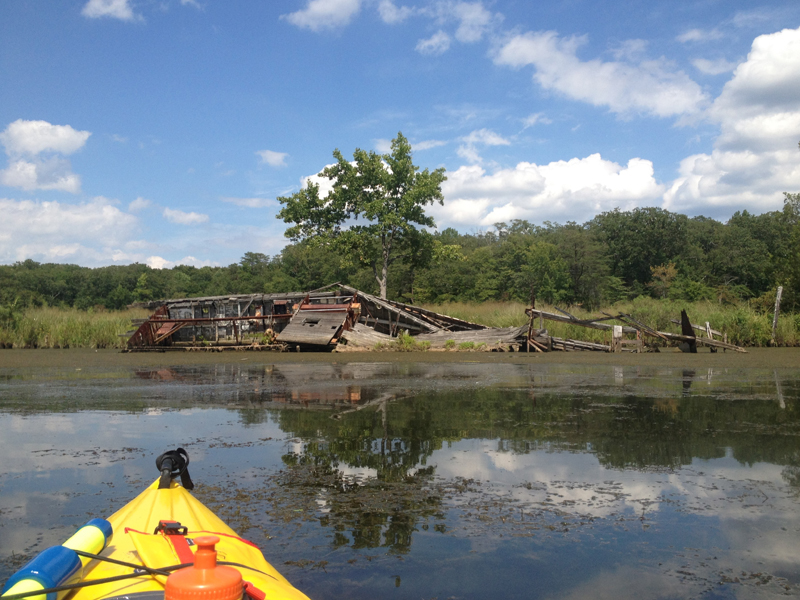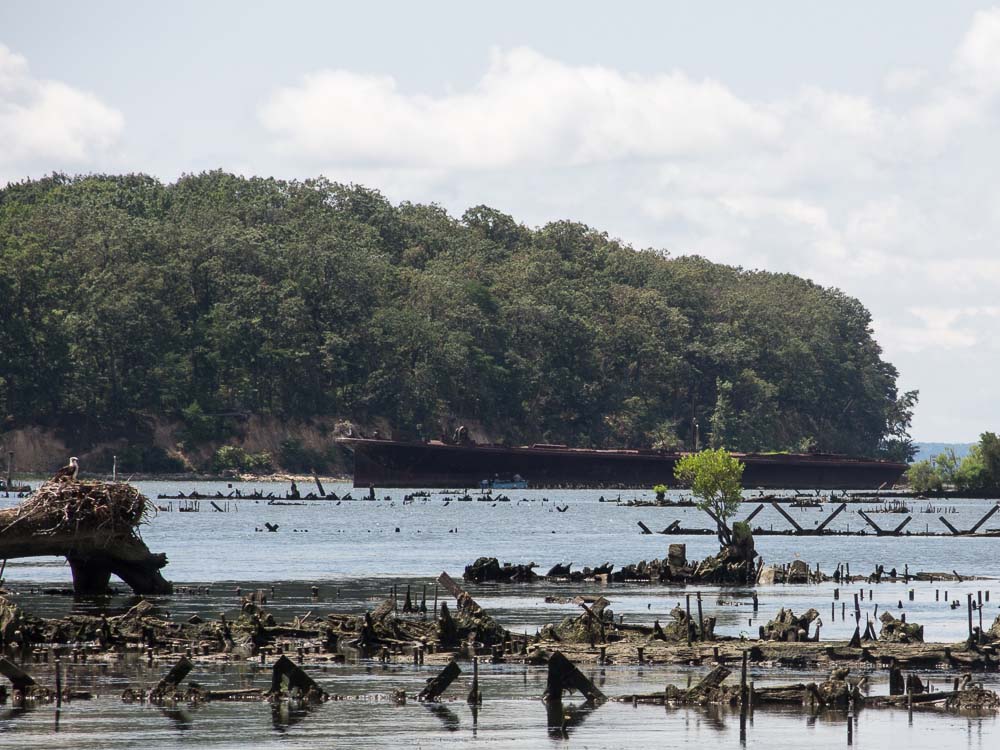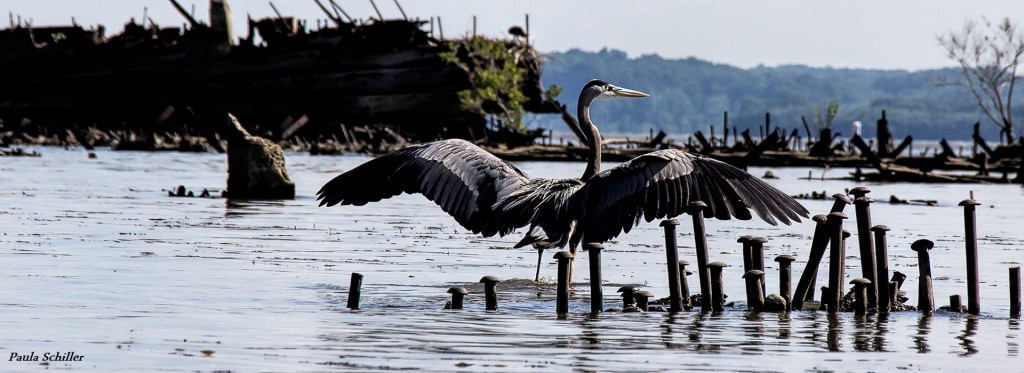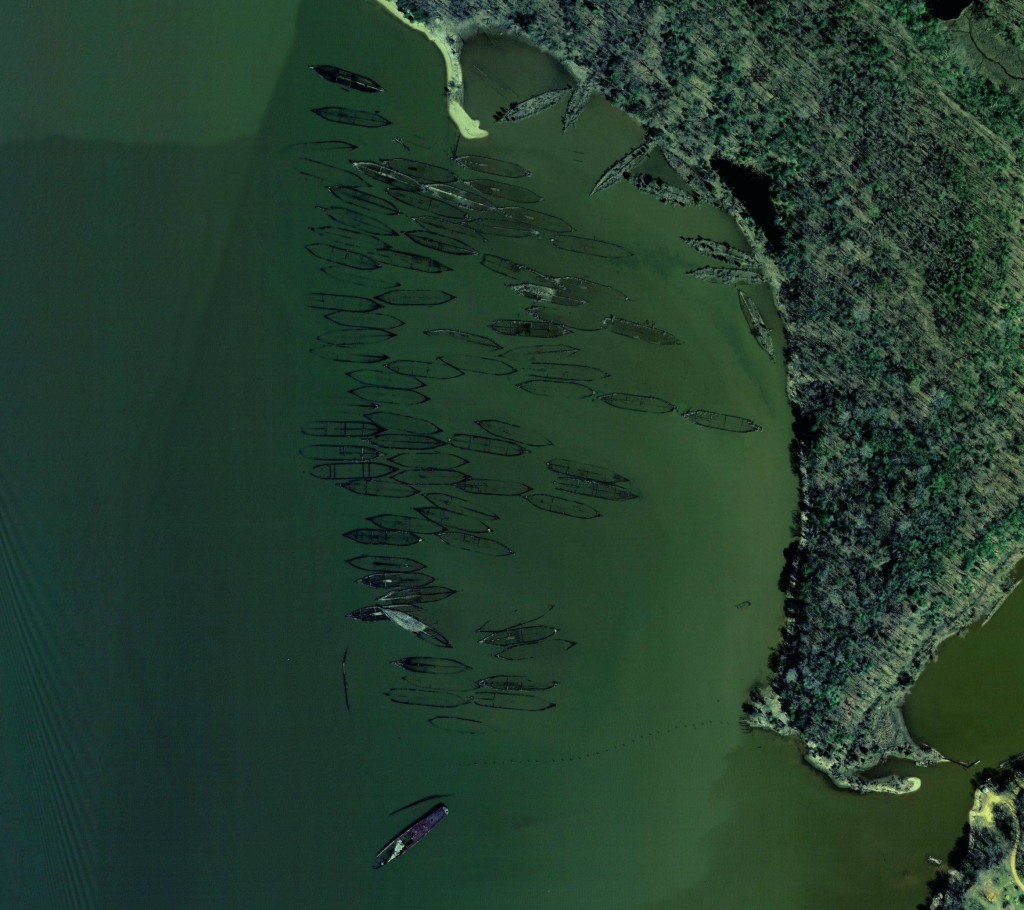Mallows Bay, Maryland – Designation as One of Newest National Marine Sanctuaries Planned. And, other about marine environment and life.

What a fascinating area is Mallows Bay! 14 sq. mi. along the Potomac River in Charles Co. (southern), Maryland.
Mallows Bay has been designated by NOAA as a National Marine Sanctuary after significant public input. Charles Co. (which operates it as a park), former Gov. O’Malley and the Chesapeake Conservancy were among nominees of the site. An Environmental Impact Statement was filed as a part of the nominating process.
Due to the sunken WWI-era wooden steamships located there, this protected area was listed last summer in the National Register of Historic Places as an historic archaeological site and historic district–in case you may think the National Register is only about buildings. Another nominee, Cashes Ledge, off New England’s coast, didn’t make it after local fishing interests objected.
 Perhaps of interest is the fact that marine national monuments, by contrast to the Sanctuary program, can be established by presidential proclamation under the Antiquities Act of 1906. An example is the Pacific Remote Islands Marine National Monument which was expanded last year by
Perhaps of interest is the fact that marine national monuments, by contrast to the Sanctuary program, can be established by presidential proclamation under the Antiquities Act of 1906. An example is the Pacific Remote Islands Marine National Monument which was expanded last year by  President Obama from 83K sq. mi. to over 490K sq. mi. where commercial fishing and mineral extraction is banned. (For a comparison of the two programs, see here.)
President Obama from 83K sq. mi. to over 490K sq. mi. where commercial fishing and mineral extraction is banned. (For a comparison of the two programs, see here.)
Rachel Sadow, writing recently in “DCist,” says: “In addition to the WWI-era ships (and a bunch of others that were dumped at the site in the ensuing years) that have since sprouted wildlife, the area is home to archaeological artifacts that go back 12,000 years as well as bald eagles, heron, beaver, river otter, deer, and turtles. It is a popular area for fishing, especially bass.” Ospreys nest there also.
Kayakers and other boaters enjoy Mallows Bay. It’s part of a number of trails, including the Captain John Smith Chesapeake National Historic Trail and the Potomac River Water Trail.
For the Chesapeake Conservatory’s “Shorelines” newsletter, historian Donald G. Shomette observes: “This section of the Potomac River is part of the traditional lands and cultural landscape of the Piscataway-Conoy nation, as well as the site of important archaeological findings. African Americans have been a part of the area’s history for centuries, as well, with history related to African slaves landing on Maryland’s shores, fighting in the Civil War, and building many of the wooden steamships that now rest in the shallow waters of Mallows Bay.”
At the end of his Winter 2001 piece about the creation of Mallows Bay, Shomette mused: “Thus sleeps the largest shipwreck fleet in the Western Hemisphere — and possibly the world.” (Find Shomette’s piece here, if interested in a detailed history of “The Ghost Fleet of Mallows Bay courtesy of the MD DNR.)
This Just In–
MD Attorney General Brian Frosh, against the wishes of his boss, Gov. Larry Hogan, has come out in support of the Clean Power Plan. 16 other states are in so far. IMO, this needs to be enacted–ice is melting at an alarming rate in west Antarctica, for one. Look here. New watchword: decarbonization. CORRECTION: Gov. Hogan is not Frosh’s boss. He’s independently elected as MD-AG.
Now Hear This– about fresh salmon
If looking for fresh wild salmon at the fish counter, you might want to inquire how the fish monger knows its wild versus fresh. Or, of the restaurant waiter same question. A recent investigation by Oceana revealed mislabeling 43% of the time. (I think I can tell by the color and texture at the fish case, but asking shouldn’t be considered out of order.)

